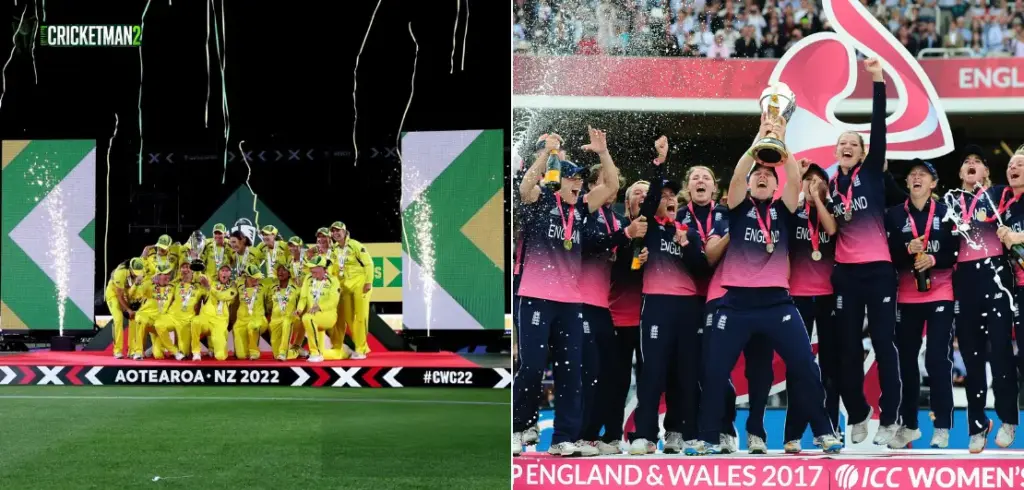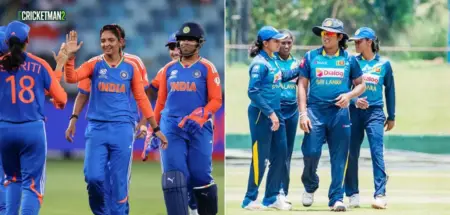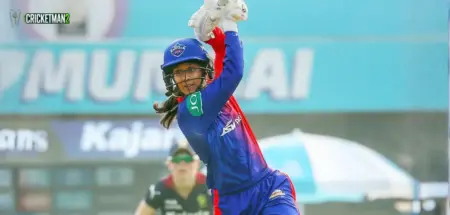The Women’s ODI World Cup is the oldest multinational cricket tournament, having started back in 1973 — two years before the men’s World Cup began. Over the decades, it has produced countless memorable moments, legendary players, and historic triumphs that shaped women’s cricket globally.
Since its inception, the tournament has witnessed several dominant runs and breakthrough victories. No team has been as consistent as Australia, who have lifted the trophy a record six times. However, the 2025 edition brought a new chapter in women’s cricket history as India finally lifted their maiden World Cup title on home soil.
Here’s the complete list of Women’s ODI World Cup Winners from 1973 to 2025.
Women’s ODI World Cup Winners List (1973–2025)
| Edition | Winner | Runner-up | Host |
|---|---|---|---|
| 1973 | England | Australia | England |
| 1978 | Australia | England | India |
| 1982 | Australia | England | New Zealand |
| 1988 | Australia | England | Australia |
| 1993 | England | New Zealand | England |
| 1997 | Australia | New Zealand | India |
| 2000 | New Zealand | Australia | New Zealand |
| 2005 | Australia | India | South Africa |
| 2009 | England | New Zealand | Australia |
| 2013 | Australia | West Indies | India |
| 2017 | England | India | England |
| 2022 | Australia | England | New Zealand |
| 2025 | India | South Africa | India |
1973: England
England were the inaugural champions of the Women’s World Cup in 1973. Playing on their home soil, they topped the points table with five out of six wins to claim the trophy.
1978: Australia
Australia showed their dominance in the 1978 edition hosted by India. They defeated New Zealand, India, and England to top the table and win their maiden World Cup title.
Read Also:- Most Beautiful Women Cricketers in the World
1982: Australia
New Zealand hosted the third edition in 1982, with five participating teams. After a triple round-robin format, Australia and England qualified for the final.
England put up 151 for 5 on the board in the 60-over-a-side contest. Australia struggled in the chase but somehow found their way home to lift the World Cup.
1988: Australia
Australia made a hat-trick of the World Cup titles in 1988. And we had yet another Australia-England final.
Playing at the iconic Melbourne Cricket Ground (MCG), Australia restricted England to 127 for 7 in 60 overs. In response, Australia faced two early setbacks. But Lindsay Reeler (59*) and Denise Annetts (48*) held their ground to help Australia win by eight wickets.
1993: England
The Women’s World Cup returned to England in 1993, with the hosts lifting the trophy at Lord’s.
They squared off against an unbeaten New Zealand in the final. New Zealand, obviously, looked like the favourites, but England turned the tables.
England put up a fighting 195 for 5 on the scoreboard. In reply, New Zealand lost wickets at regular intervals before being bowled out for 128.
1997: Australia
Australia and New Zealand faced off in the 1997 final. Australia came into the final after beating hosts India in the first semi-final. New Zealand, on the other hand, avenged the 1993 final loss against England.
After electing to bat first, New Zealand mustered 164 runs, with Debbie Hockly alone contributing 79. Led by Belinda Clark’s 52, Australia chased down the target with five wickets to spare and clinched their fourth World Cup trophy.
2000: New Zealand
New Zealand turned the agony of the last two editions into joy in 2000. And that too in their own backyard.
The White Ferns took revenge for the 1997 final loss by beating Australia in the 2000 final. They first put up 184 runs on the board before a collective bowling effort restricted Australia to 180 runs.
2005: Australia
South Africa hosted the Women’s World Cup for the first time in 2005. And this was also the first time India reached the tournament’s final. They were up against an undefeated Australia in the title clash.
Karen Rolton’s unbeaten 107 propelled Australia to 215 for 4. India later crumbled under pressure to hand Australia their fifth title.
2009: England
The 2009 edition saw the rematch of the 1993 final. England and New Zealand fought hard to become the world champions.
Batting first, New Zealand mustered 166, with captain Haidee Tiffen (30), Nicola Browne (25), and Lucy Doolan (48) showing some resistance. Nicky Shaw was the pick of the bowlers for England, scalping 4 for 34.
Sarah Taylor (39) and Caroline Atkins (40) then led the charge with the bat to help England clinch their third title.
See Also:- Top 10 Oldest Women Cricketers Still Playing in the World Cup 2025
2013: Australia
Australia and the West Indies stormed into the final of the 2013 edition. The West Indies’ inexperience, though, worked against them.
Australia played like true champions. They set up a challenging target of 260, riding on the back of fifties from Jess Duffin (75) and Rachael Haynes (52). In response, the West Indies didn’t put up a fight, going down for 145.
2017: England
Hosts England and India battled it out in the 2017 edition final. India’s bowlers, spearheaded by Jhulan Goswami, restricted England to 228 for 7.
In reply, Poonam Raut’s 86 and Harmanpreet Kaur’s 51 took India well within the distance of the target. But Anya Shrubsole’s 6 for 46 denied India their first title by nine runs.
2022: Australia
The 2022 edition saw yet another Australia vs England finale. And this was a grand affair, with Australia breaching the 300-run mark.
Alyssa Healy’s brilliant 170-run knock, along with fifties from Rachael Haynes (68) and Beth Mooney (62), helped Australia post 356 for 5.
England didn’t start the chase well, but Nat Sciver-Brunt’s unbeaten 148 kept them in the game. While she held one end, it didn’t stop England from being bowled out for 285.
2025: India
India Women created history by winning their first-ever ICC Women’s ODI World Cup in 2025. Playing at the DY Patil Sports Academy, Navi Mumbai, the Women in Blue defeated South Africa by 52 runs in the final.
Batting first, India posted 298/7 — powered by Shafali Verma’s 87 off 78 balls and Deepti Sharma’s all-round brilliance (58 runs and 5 wickets). In reply, South Africa were bowled out for 246, with captain Laura Wolvaardt scoring a fighting century (101 off 98 balls).
With this win, India became the first women’s team ever to win an ODI World Cup after losing three matches in the same tournament. Harmanpreet Kaur also became the oldest captain (36 years, 239 days) to lift the Women’s ODI World Cup.
Player of the Match: Shafali Verma (87 & 2/36)
Player of the Tournament: Deepti Sharma (22 wickets & 200+ runs)




